Most popular cat breeds in America
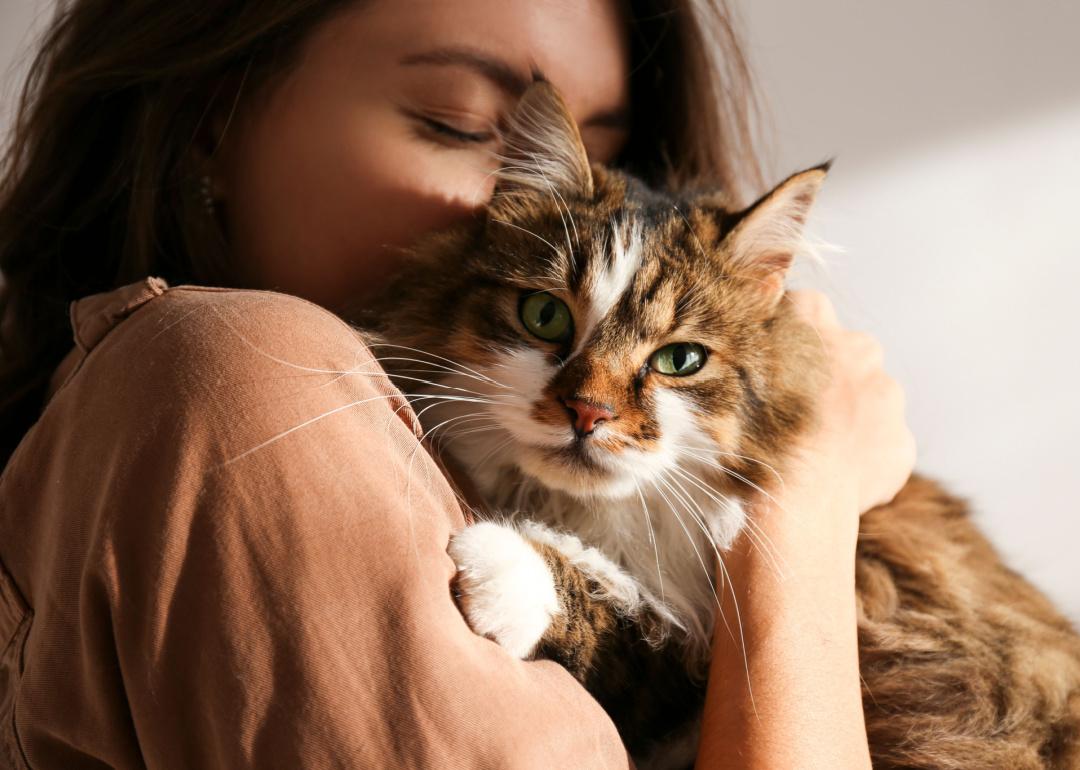
evrymmnt // Shutterstock
Most popular cat breeds in America
Woman holding Siberian cat
As the world faced the COVID-19 pandemic together, more people realized how much they needed a little more comfort and company, which is why 2 in 5 people in the United States decided to welcome a feline pet into their home. More than 45 million Americans own a cat, according to the latest American Pet Products Association survey. Surprisingly, fewer than 1 in 10 people purchased their cat from a breeder or a pet store. Others found their furry companions through adoption, family and friends, or taking in strays. While cats are easier to care for than dogs (which need more walking and training), it would still cost about $801 in annual veterinary visits per household in addition to providing food and a comfortable place to live.
To give potential feline pet owners a better idea of what types of cats might suit them best, Stacker examined YouGov data on cat breeds and presented the 25 most popular in America. Popularity is defined as the percentage of people who have a positive opinion of a cat breed, while fame is defined as the percentage of people who have heard of a cat breed.
You may also like: 50 fascinating facts about dogs
![]()
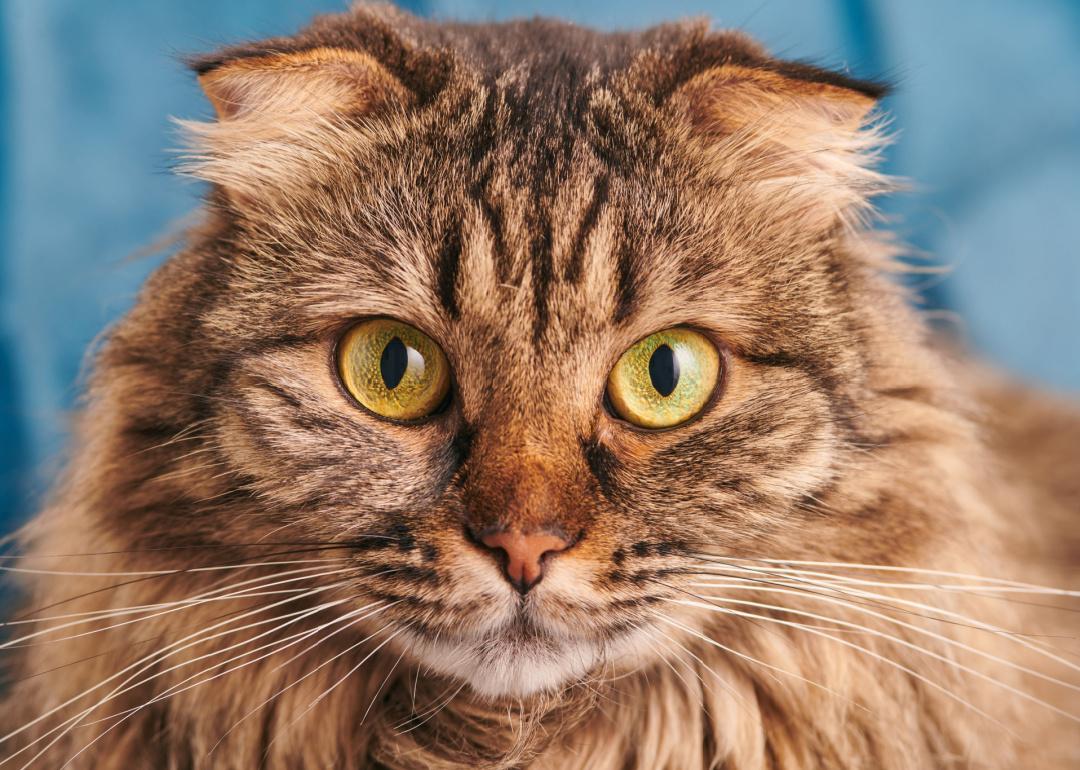
travelarium.ph // Shutterstock
#25. Highlander
Portrait of Highland Scottish Fold cat
– Popularity: 38%
– Fame: 63%
In 1993, Joe Childers had the idea to breed a feline that resembled big, powerful cats, which is how the world got the Highlander, a cat with a wild appearance and a playful nature. While making good play companions, Highlanders are also great nappers. They usually live between 10 and 15 years and make a great addition to families with kids.
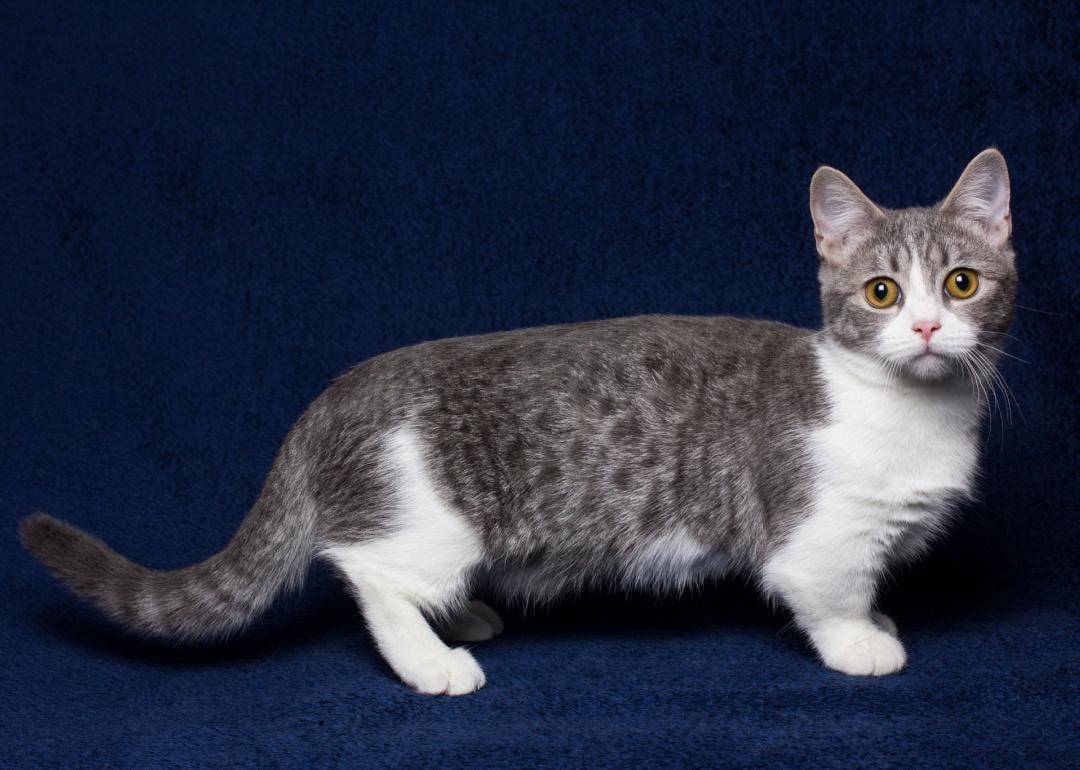
Sviatoslav_Shevchenko // Shutterstock
#24. Munchkin
Grey and white munchkin cat standing on blue background
– Popularity: 38%
– Fame: 62%
Named after the Munchkin characters in “The Wizard of Oz,” this cat breed began in the early ’80s, when a teacher from Louisiana found two pregnant, short-legged cats underneath a car. Munchkins are known for their curiosity, attraction to shiny objects, and remarkable capacity to perch on their hind legs like prairie dogs.
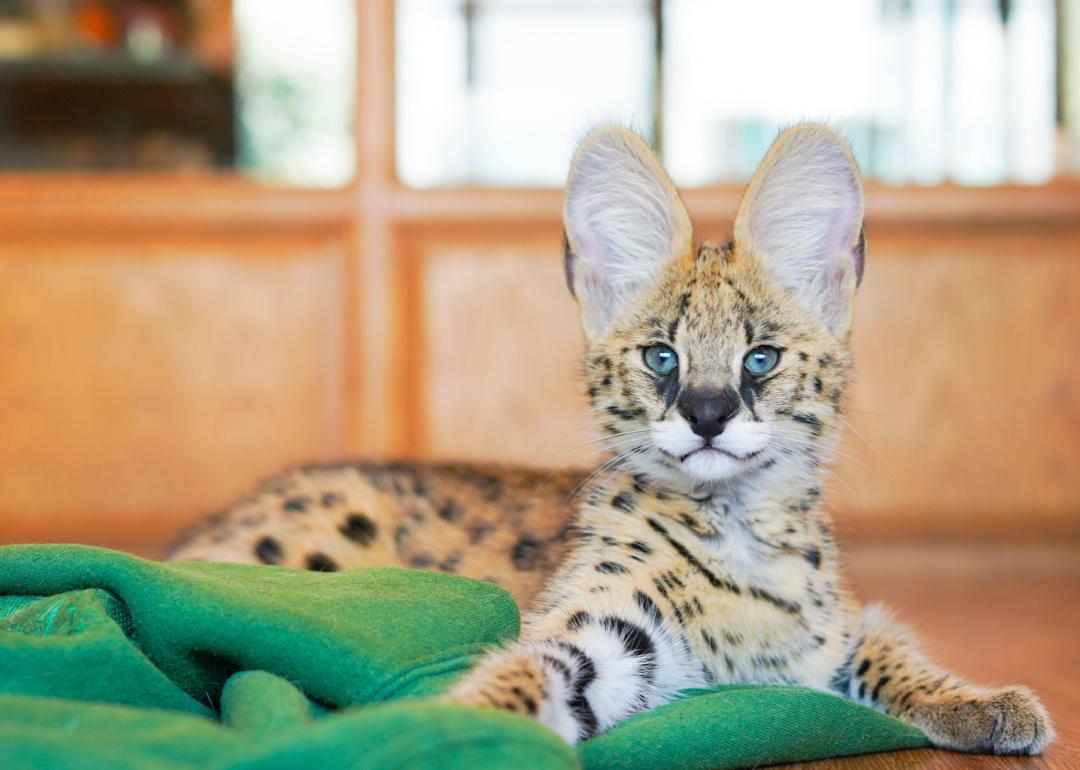
Roselynne // Shutterstock
#23. African serval
Serval cat on blanket
– Popularity: 39%
– Fame: 60%
Although some have found a way to domesticate them, serval cats are wild animals, and they’ve never lost that spirit. Their origin, as their name suggests, goes back to the African grasslands south of the Sahara Desert. They live longer than most cats—about 22 years. Despite their beautiful coloring and noble looks, African servals are not the most appealing for most households. Because of their wild ways, servals need lots of space to roam and run, a luxury most households cannot afford. What’s more, they don’t dine on regular cat food but prefer a variety of meats and fish on the menu. Their rough playing style may not mesh well with families that have young children. Several states in the U.S. restrict their ownership.
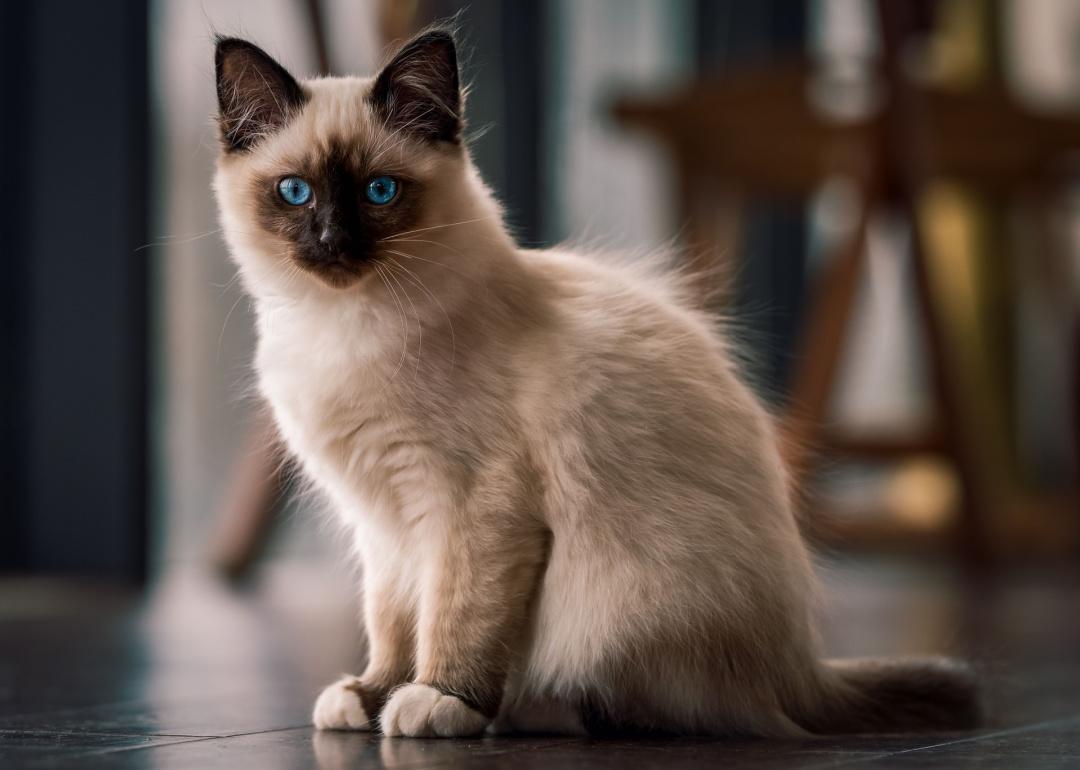
Nadjim // Shutterstock
#22. Birman
Portrait of a Birman cat with blue eyes
– Popularity: 39%
– Fame: 61%
The Birman’s blue eyes and silky, light-colored skin have many ooh-ing and ahh-ing, which is only fitting; legend has it this feline got its features through a blue-eyed Asian goddess called Tsun-Kyan-Kse. She turned the Birman’s eyes blue but kept its feet white to signify purity. Recognized for the first time by French registries in 1925, the Birman is a friendly cat with a laid-back personality, which makes them ideal for first-time owners.
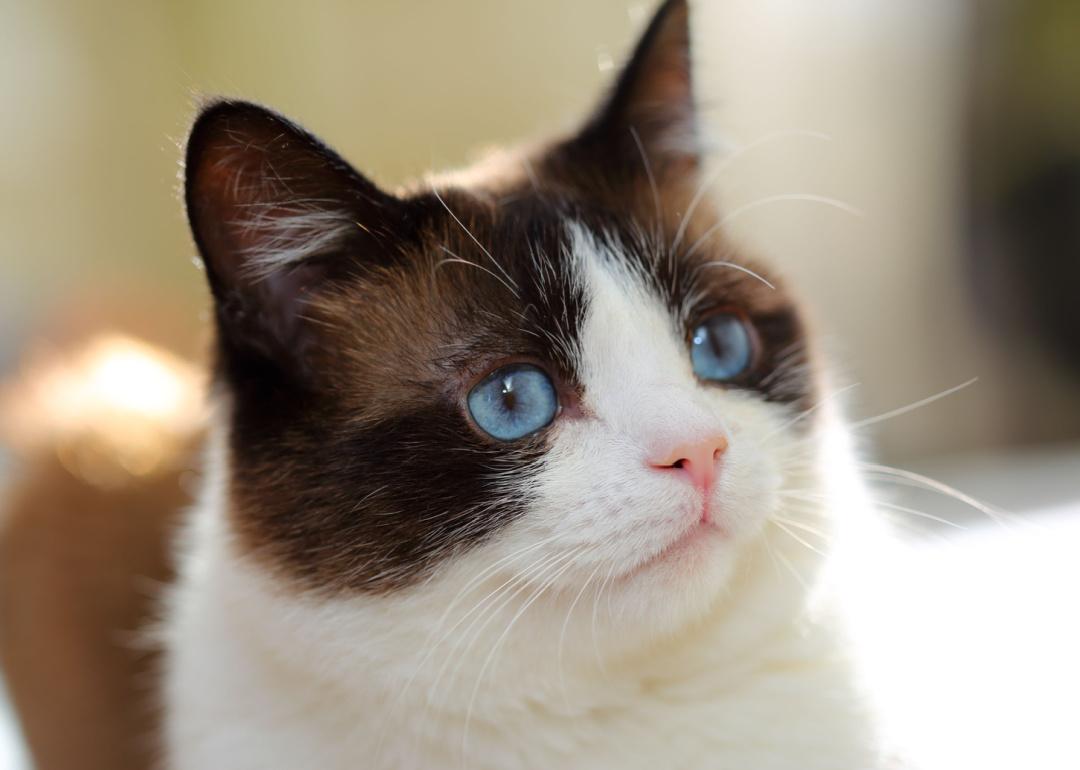
Kokhanchikov // Shutterstock
#21. Snowshoe
Portrait of Snowshoe cat
– Popularity: 39%
– Fame: 60%
Thanks to its distinctive white-sock feet, the snowshoe won’t be difficult to pinpoint in a litter. The veterinarian page PetMD explains that this breed began when a Siamese cat breeder, Dorothy Hinds-Daugherty, found three kittens with white feet in one litter. Charmed by them, she began to try and breed for that specific characteristic with the help of another breeder. Flash forward post-multiple crossings, and we have the breed we know today, a combination of Oriental shorthair and the stockier (an older Siamese).
You may also like: Common household pets that live the longest
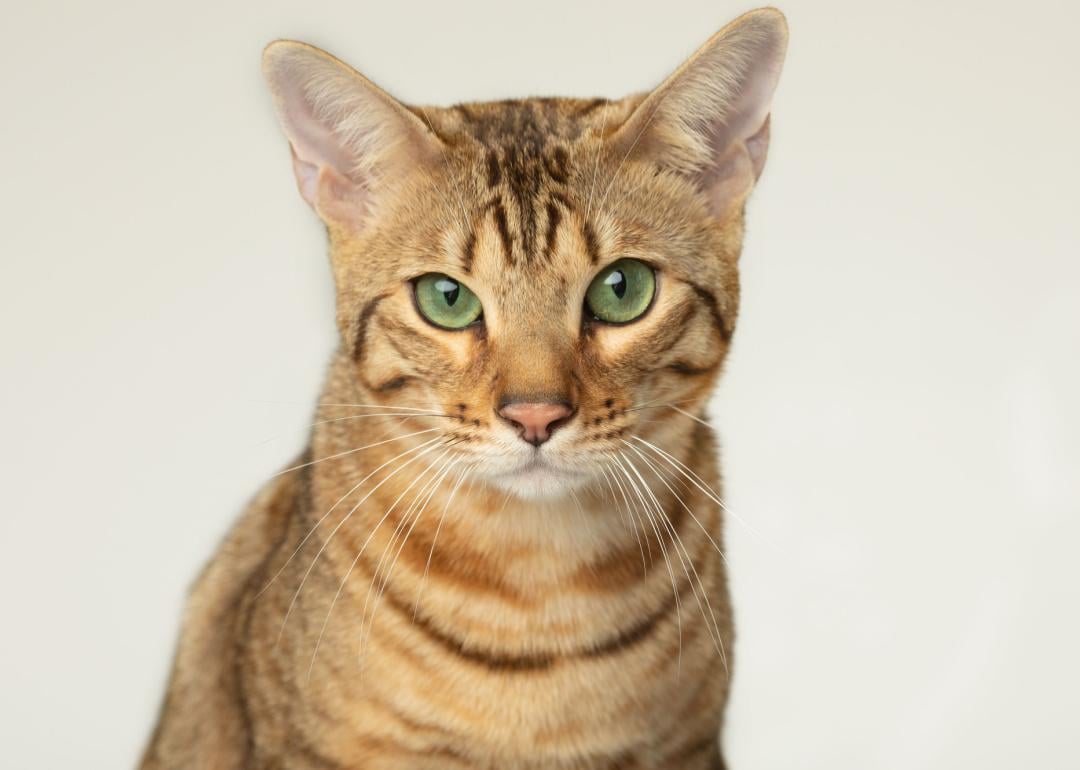
LTim // Shutterstock
#20. Serengeti
Portrait of a Serengeti cat
– Popularity: 40%
– Fame: 63%
Despite how exotic their name sounds, Serengetis are purely domestic—and domesticated. A mixed breed between Bengals and Oriental shorthairs, this feline was made to mimic the features of servals, an African wild cat. They are known for being gentle, outgoing, loyal, and playful. Be warned, though, their nimbleness has been known to open cupboards and drawers. Make sure to keep your valuables out of reach.
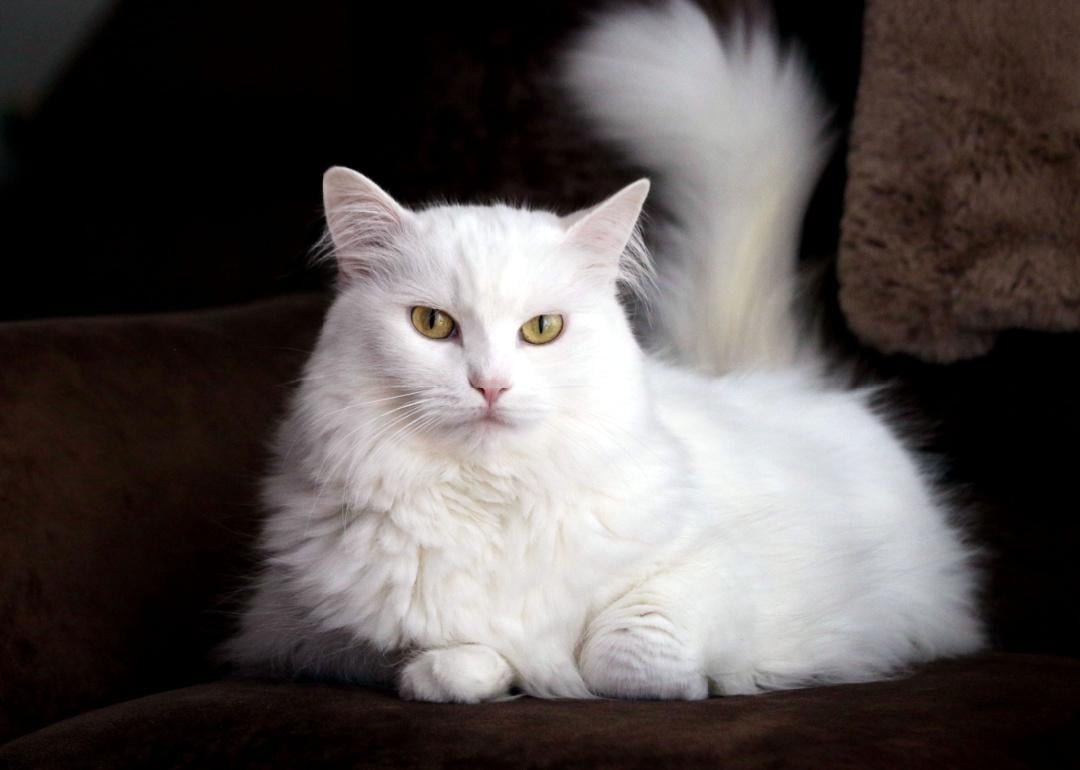
TheCats // Shutterstock
#19. Turkish angora
White Turkish Angora cat sitting on couch
– Popularity: 40%
– Fame: 63%
So prized is the Turkish angora that a zoo in Ankara, Turkey, continues to breed them, specifically for white coats and odd eyes (one blue and another in amber.) They are sensitive to their environments, and their usually sweet personality can be upset if there are sudden changes. They are loyal, affectionate, and have an exquisite way of moving. They are also really determined, so if they want something, they will get it. They have fine boning, so special attention is needed to maintain their weight.
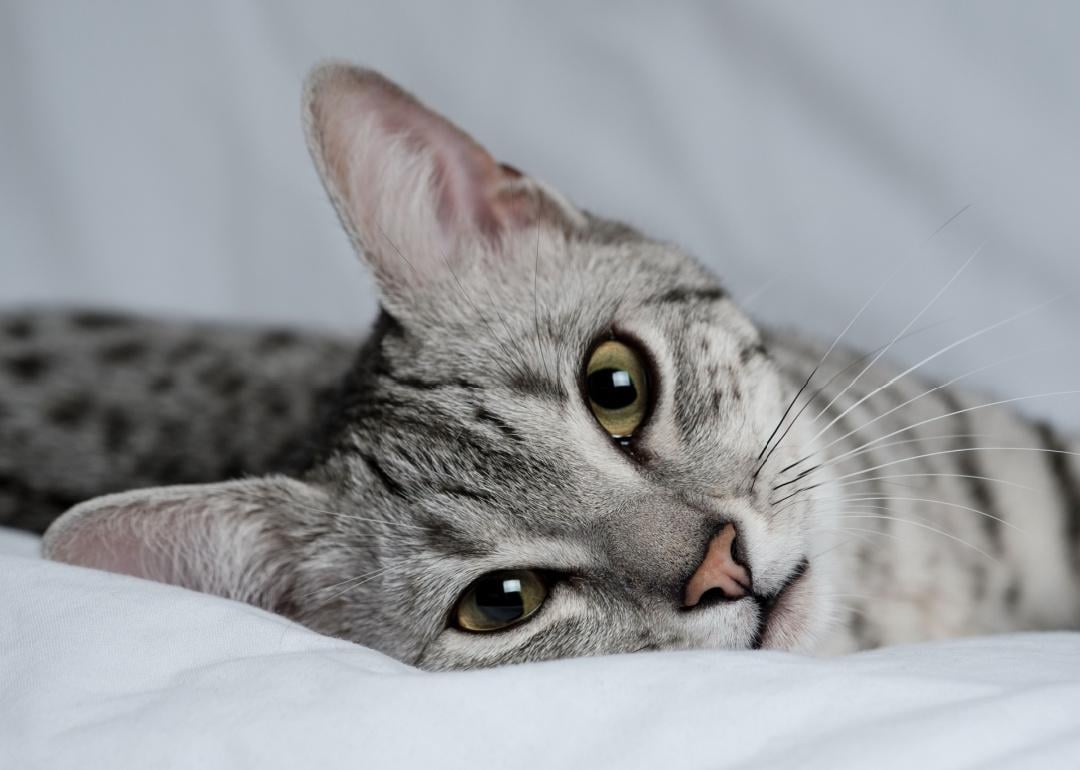
Darren Miles // Shutterstock
#18. Egyptian mau
Close-up of Egyptian may cat looking at camera
– Popularity: 40%
– Fame: 68%
As long as there have been cat lovers, there have been Egyptian Maus. Their likeness has been found on papyrus and tomb paintings, and their population has been preserved through the efforts of an exiled Russian princess. This breed is very loyal, specifically to its owners, to whom it often shows vocal affection. They are the fastest domestic cats, achieving 30 miles per hour, making them great playmates for more active children. Their unique markings, not created by human manipulation, make them the only domestic cat with natural spots.
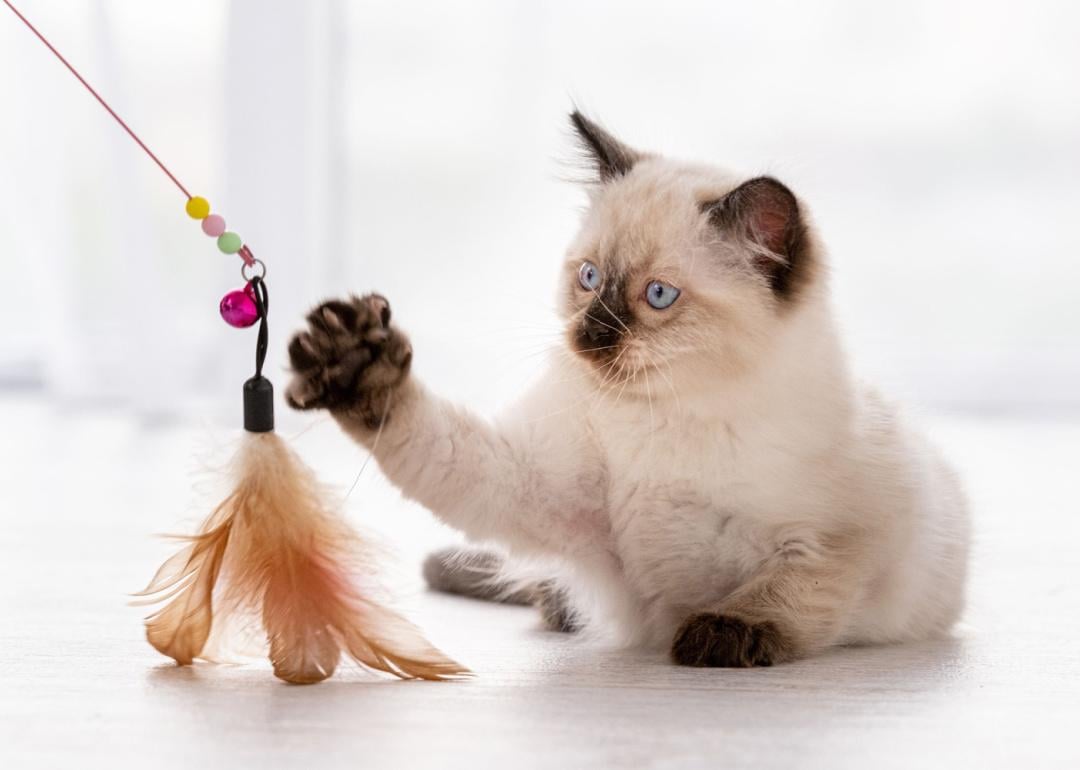
Tatyana Vyc // Shutterstock
#17. Ragdoll
Ragdoll kitten playing with feather toy
– Popularity: 41%
– Fame: 65%
Ragdolls used to roam freely until the 1960s, when Californian Ann Baker purposely bred them. Known for their pretty blue eyes, they are one of the most love-giving, active, and easy-going breeds. When picked up, they may sometimes go limp in their owners’ arms, which inspired their name. They love to spend time with their owners, but in a sit-back-and-watch capacity. Inclined to laziness, these cats need some owner involvement to get them exercising.

Canva
#16. Ragamuffin
Close-up portrait of ragamuffin cat with blue eyes
– Popularity: 41%
– Fame: 63%
Like ragdolls, ragamuffins are made for cuddles and may go limp in their owners’ arms. Their commonalities don’t end there; the ragamuffin’s story also began with California breeder Ann Baker (see above). Disagreements with other ragdoll fans led to arguments over the breed’s future, which led to a faction developing the ragamuffin. The ragamuffin is friendly and sweet. Its calm and adaptive demeanor also make them good apartment pets.
You may also like: Biggest dog breeds
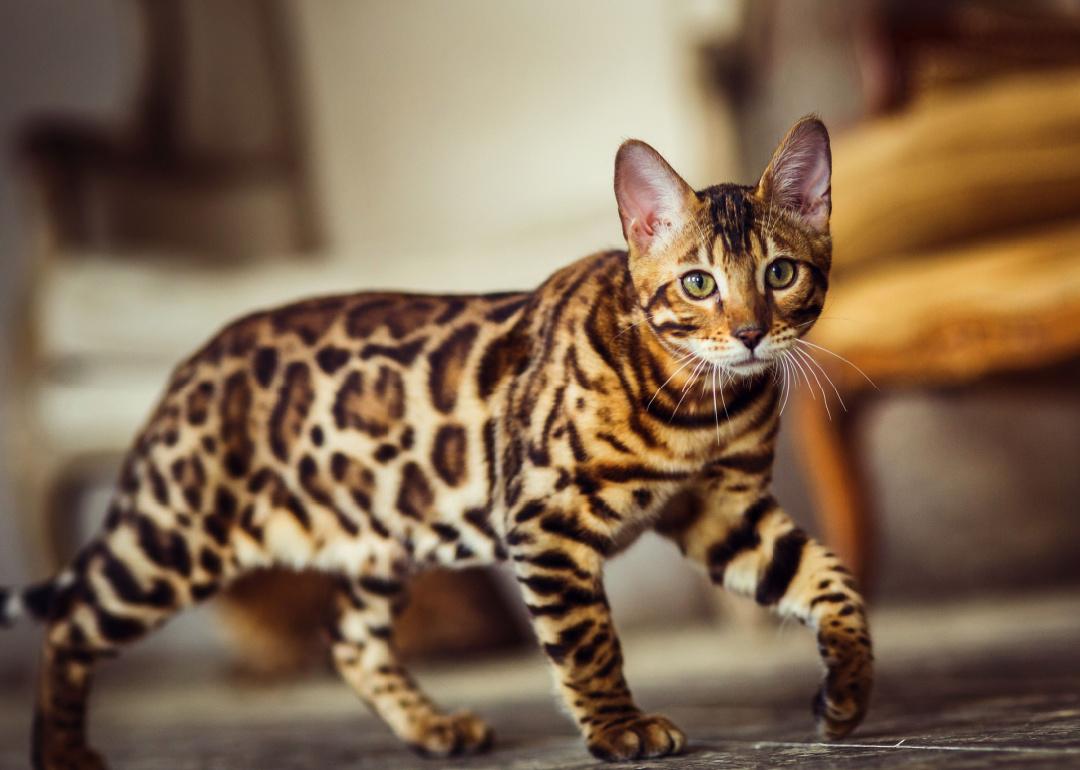
Alexander_Evgenyevich // Shutterstock
#15. Cheetoh cat
Bengal cat walking in room
– Popularity: 41%
– Fame: 64%
With the look of a mini-cheetah and the temperament of a house cat, the Cheetoh has won love for its breed despite being developed only in 2001 by a breeder who crossed a Bengal and an ocicat. Cheetoh cats are one of the biggest domestic breeds, weighing around 15 to 25 pounds. Their size and need for attention make them ideal for big families with lots of members to keep them company. A bonus for those who tend to have allergic reactions, this breed is pretty close to being hypoallergenic: It doesn’t shed or produce dander.

MDavidova // Shutterstock
#14. Napoleon cat
White munchkin kitten on blue background
– Popularity: 41%
– Fame: 65%
Also known as the minuet cat, the French military leader inspired the Napoleon cat’s name with a similar short stature. The breed came about when Joe Smith crossed a munchkin with a Persian in 1996. Because of its size, it can’t jump like other cats, but it is a good runner with a nature prone to being active. Napoleons are some of the rarest cats in the world, hence their high price. Prepare a budget of between $1,000 and $3,000 if you consider bringing one home.
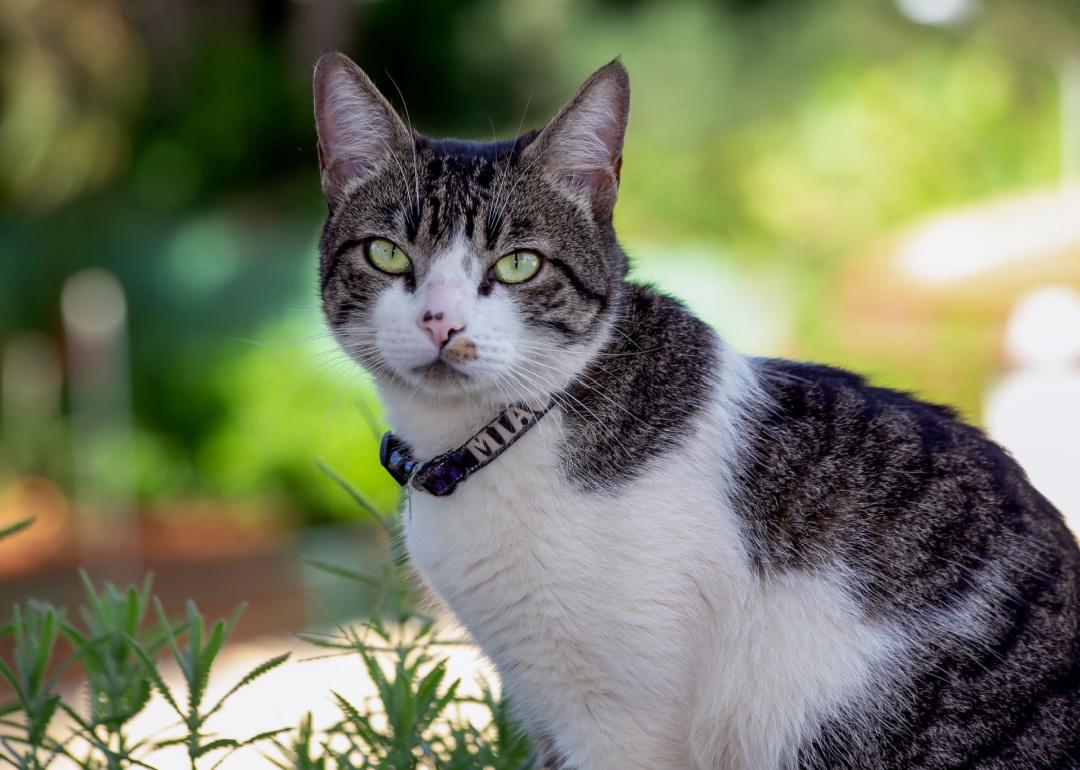
Fernando Calmon // Shutterstock
#13. American wirehair
American wirehair cat in the garden
– Popularity: 43%
– Fame: 70%
This breed’s distinctive characteristic—a dense, wiry coat, much like steel wool—results from a natural genetic mutation. First found in a litter of kittens in Verona, New York, their personalities make a good match for city dwellers. They are independent and can spend long periods alone but require attention when accompanied.
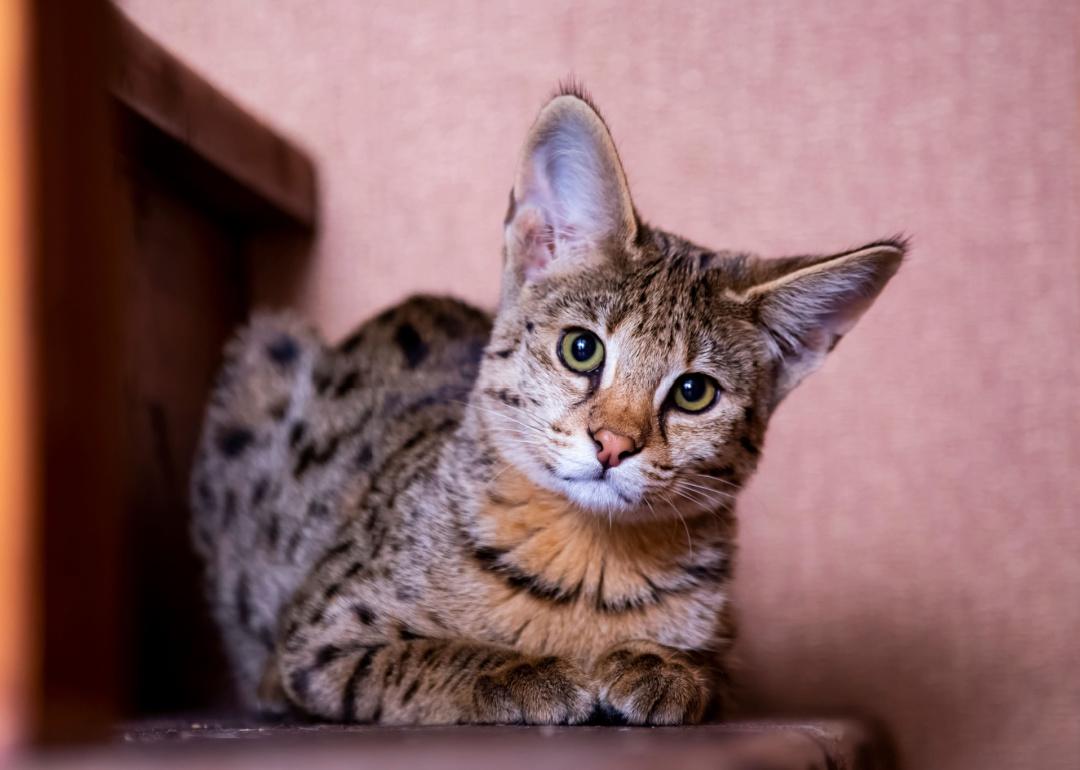
Kolomenskaya Kseniya // Shutterstock
#12. Savannah
Savannah cat sitting on stairs
– Popularity: 43%
– Fame: 66%
Lineage matters, especially with Savannah cats, which are listed according to how many generations separate them from their original, wild serval genes. Those higher up the line can cost up to $20,000, but later generations can still demand upwards of a thousand dollars. Their price, distinctive wild features, and large triangular ears may explain why celebrities like Ralph Lauren model Valentina Zelyaeva and NBA player Ben Simmons have bought them. Justin Bieber paid $35,000 for Tuna and Sushi, his two Savannah cats. Because of their wildness and hybrid status, they are banned in several states.
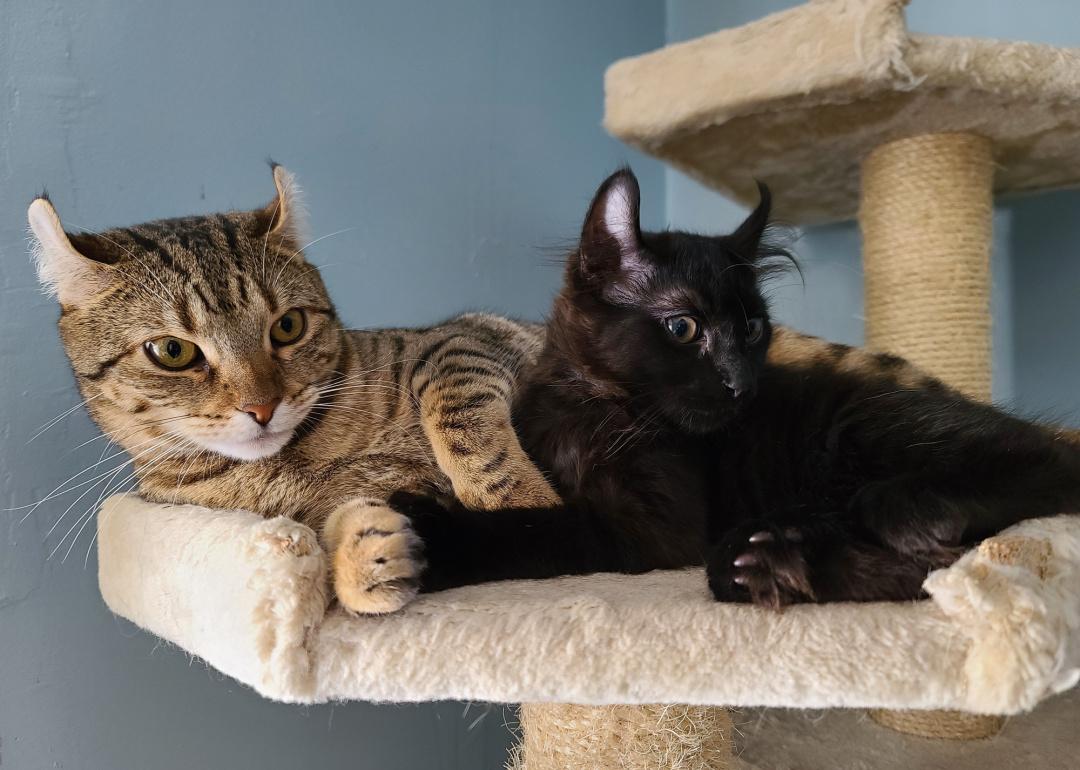
Patrick Hatt // Shutterstock
#11. Desert lynx
Two Highlander kittens on a cat post
– Popularity: 44%
– Fame: 68%
First developed by crossing an American short-tailed lynx with domestic cats, desert lynxes can sometimes feel like having a dog in the house since they love to follow their owners around. A sociable cat, this breed needs regular playtime and enough room to roam around. If you have children, socialize these desert lynxes early on—but still, keep an eye out.
You may also like: Least popular dog breeds in America

Review News // Shutterstock
#10. Russian blue
Russian blue kittens climbing tree
– Popularity: 44%
– Fame: 67%
Known for its plush, silvery-blue coat, the Russian blue has some royal fans. Rumor has it they descended from pets kept by Russian czars. They were first exhibited at London’s Crystal Palace in 1875. By 1912, Russian blues became its own separate competition class. These cats are known for being affectionate and can typically get along with children. They can be reserved with new faces in the house.
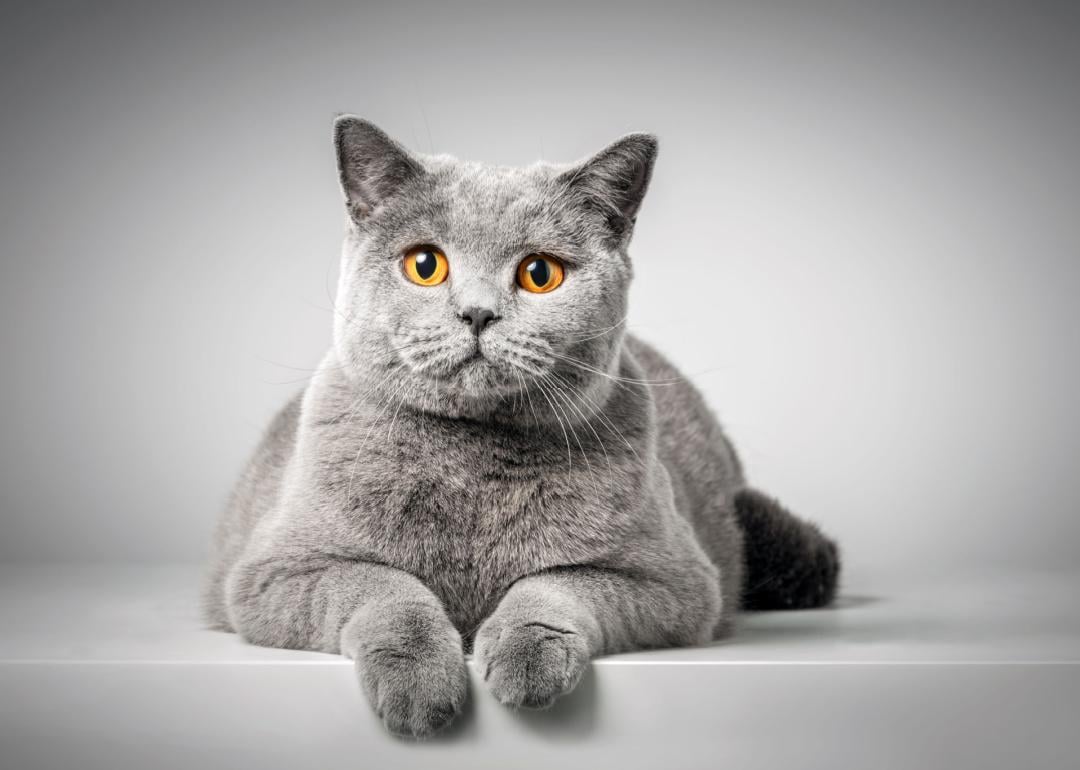
PHOTOCREO Michal Bednarek // Shutterstock
#9. British shorthair
Portrait British shorthair cat
– Popularity: 45%
– Fame: 72%
This breed has a special place in books and movies. Despite having a Spanish accent, Puss in Boots is considered a British shorthair, just like the Cheshire Cat from “Alice in Wonderland.” In real life, Coby the Cat claims almost 2 million Instagram followers. A hugely popular cat breed, British shorthairs come in various colors, though the silver-maned “British blue” seems to stand out. Blessed with easygoing personalities, they get along with family members, including dogs.
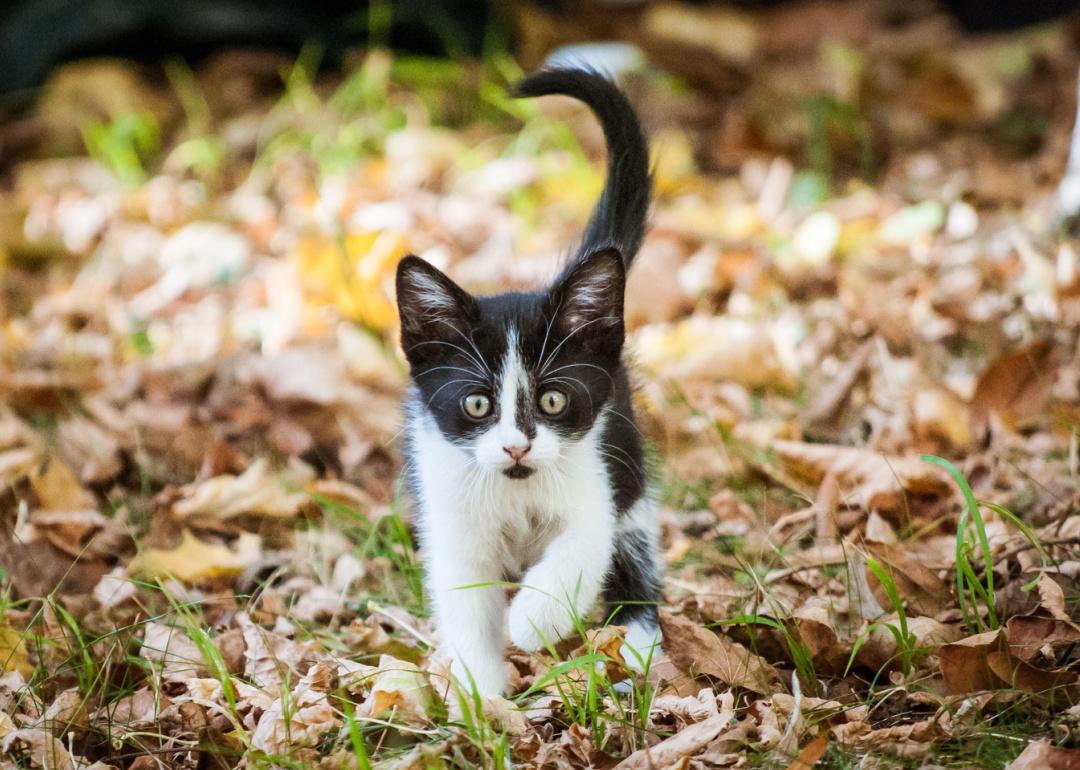
New Mindflow // Shutterstock
#8. European shorthair
Black and white European shorthair kitten walking towards the camera
– Popularity: 46%
– Fame: 71%
Originally from Sweden, this breed continues to be popular in the Scandinavian countries. Bred alongside barn cats throughout Europe, this cat retains many great qualities, including the ability to adapt quickly to new situations, making them great additions to households with children and seniors. However, they still inherit their hunting instincts, so be sure to keep small creatures out of reach.
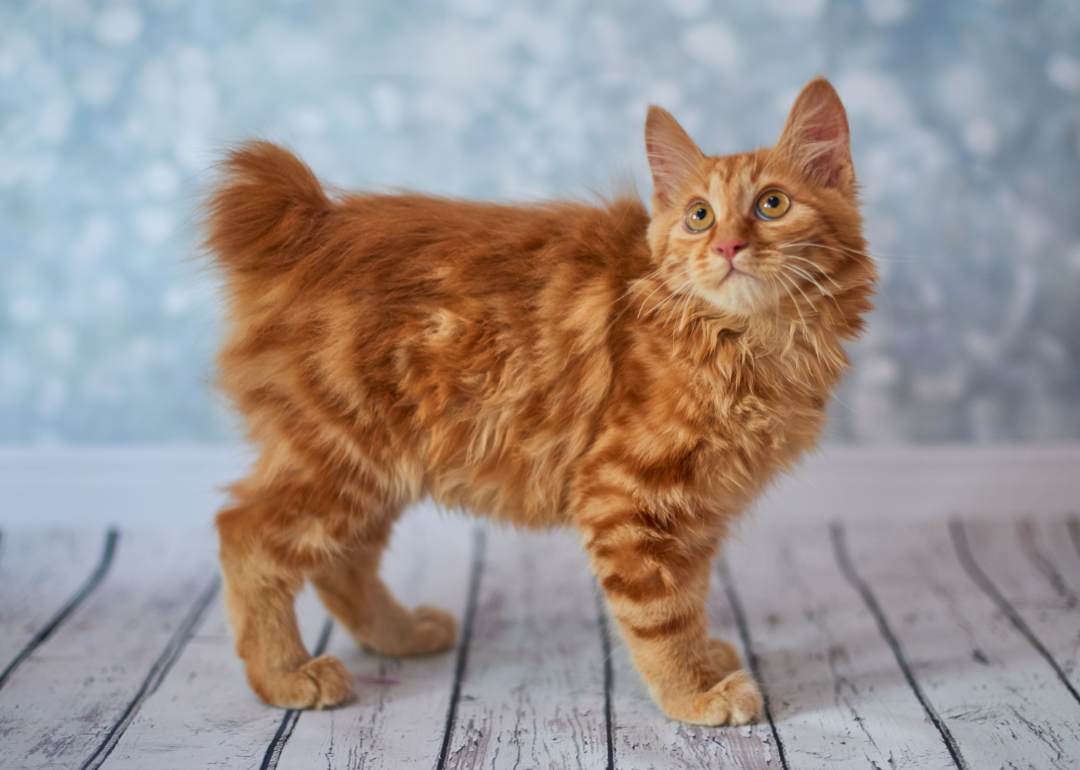
Canva
#7. American bobtail
Orange american bobtail cat standing on wood floor
– Popularity: 46%
– Fame: 77%
It’s easy to spot an American bobtail; just look for one with a tail about a third as long as you might expect. Some are born without a tail and are affectionately called “rumpies.” Known as “the golden retriever of cats,” these felines are easygoing and travel well but require a lot of attention and affection. Considered a rare breed, acquiring one can cost from $600 to $1,200.
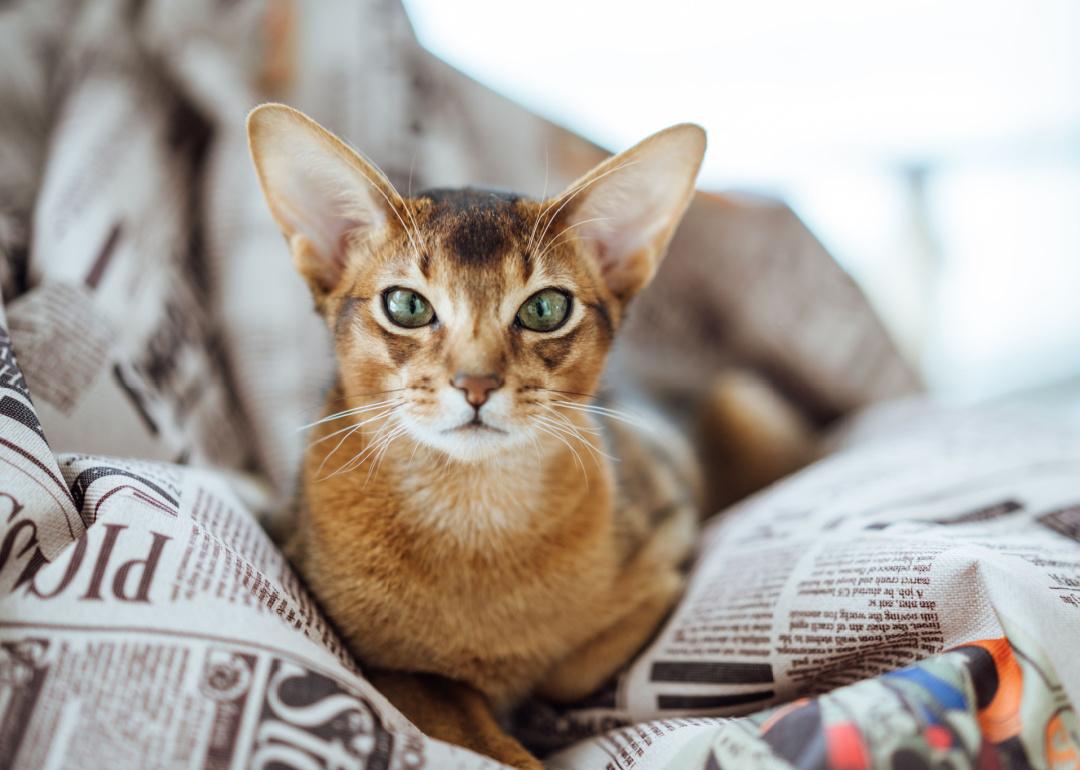
nastasija Kru // Shutterstock
#6. Abyssinian
Abyssinian cat portrait
– Popularity: 48%
– Fame: 74%
Known as “cats from the Blue Nile,” they are believed to be the sacred cats of Egyptian Pharaohs. A more apparent origin begins in the 1860s, when Lord Robert Napier brought over a cat from a military expedition to Abyssinia (now Ethiopia). The breed has become so popular that it survived two world wars and a wave of feline leukemia. This cat is best for the active owner, though Abys can sometimes cuddle too.
You may also like: Why do cats have whiskers? And answers to 50 other kitten questions
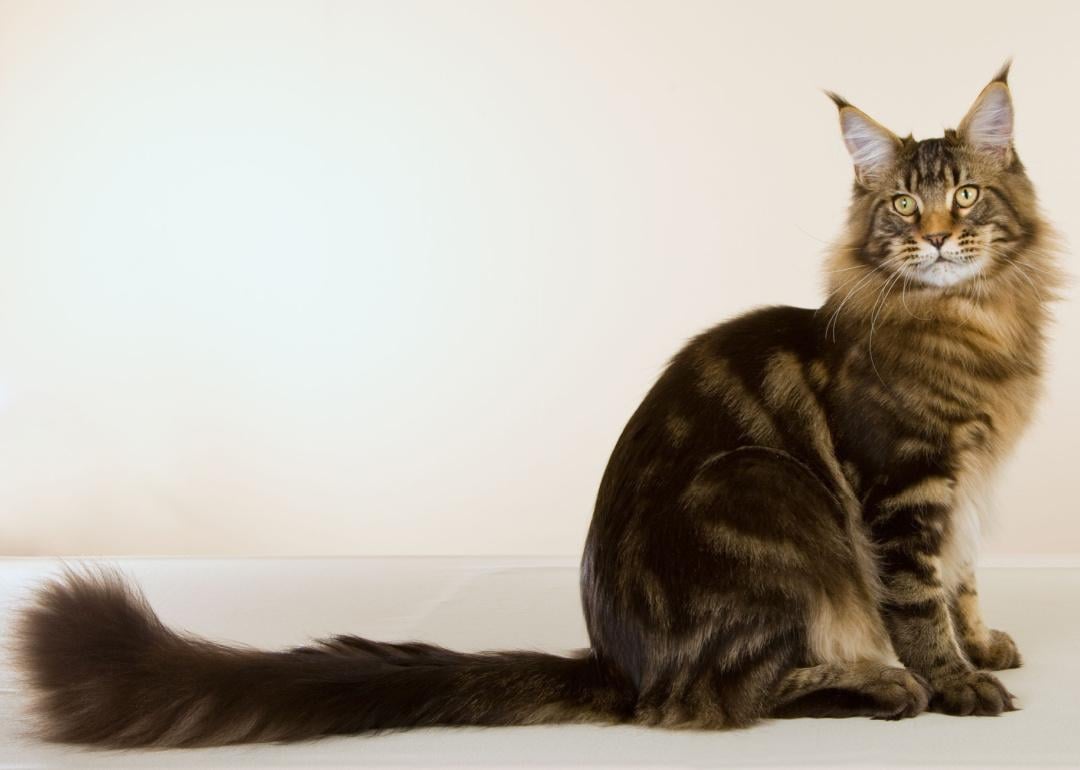
Linn Currie // Shutterstock
#5. Maine coon
Maine coon cat sitting
– Popularity: 50%
– Fame: 72%
An official state cat, the Maine coon got its name from its geographic origins (brought over to the state by European seafarers) and the brushlike tail resembling a raccoon. This breed is ready to endure extreme climates, even showing a fascination for water. They are big, muscular, athletic, and available in 75 color combinations. They are also known for their mouse-hunting talent. Some competitions even reward the best “Coon Cat.”
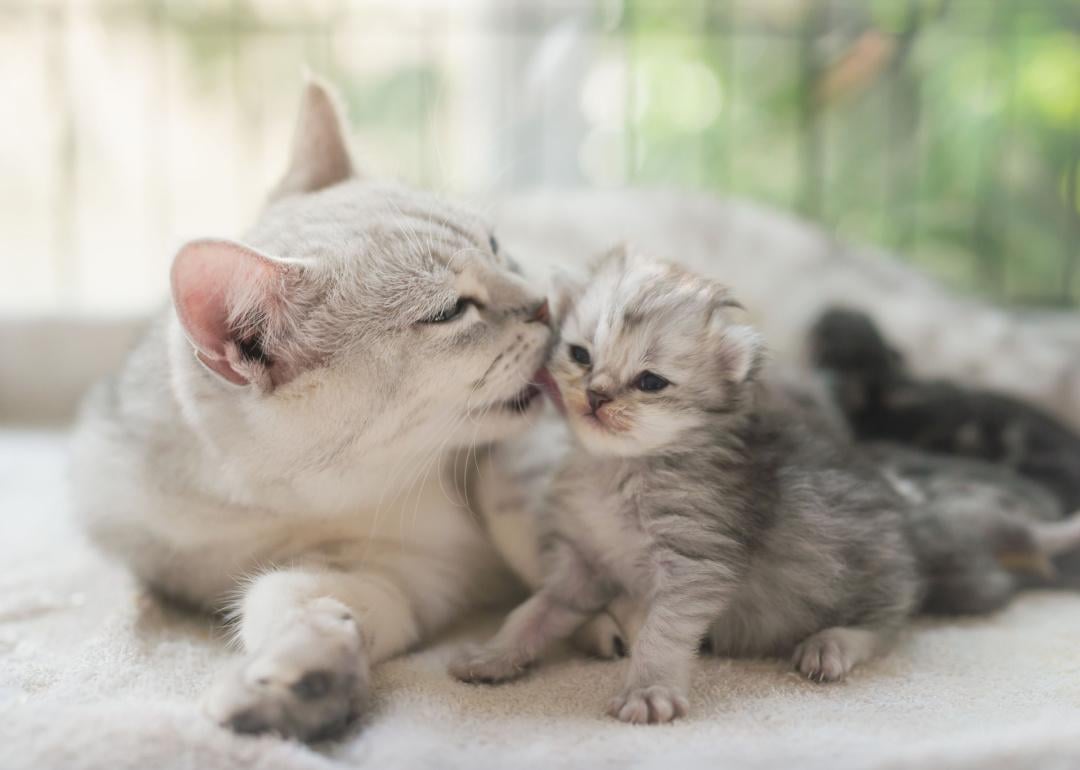
ANURAK PONGPATIMET // Shutterstock
#4. American shorthair
American shorthair cat with her kitten
– Popularity: 51%
– Fame: 80%
So many domestic shorthair cats abound that it’s hard to tell which is which. It is especially true with American shorthairs. The only way to confirm its heritage is with certified breed papers, and it was until 1966 that its name was established to distinguish it from other types of shorthairs. Brolic and agile, they were working cats in the past, used in food stores to keep rats away.
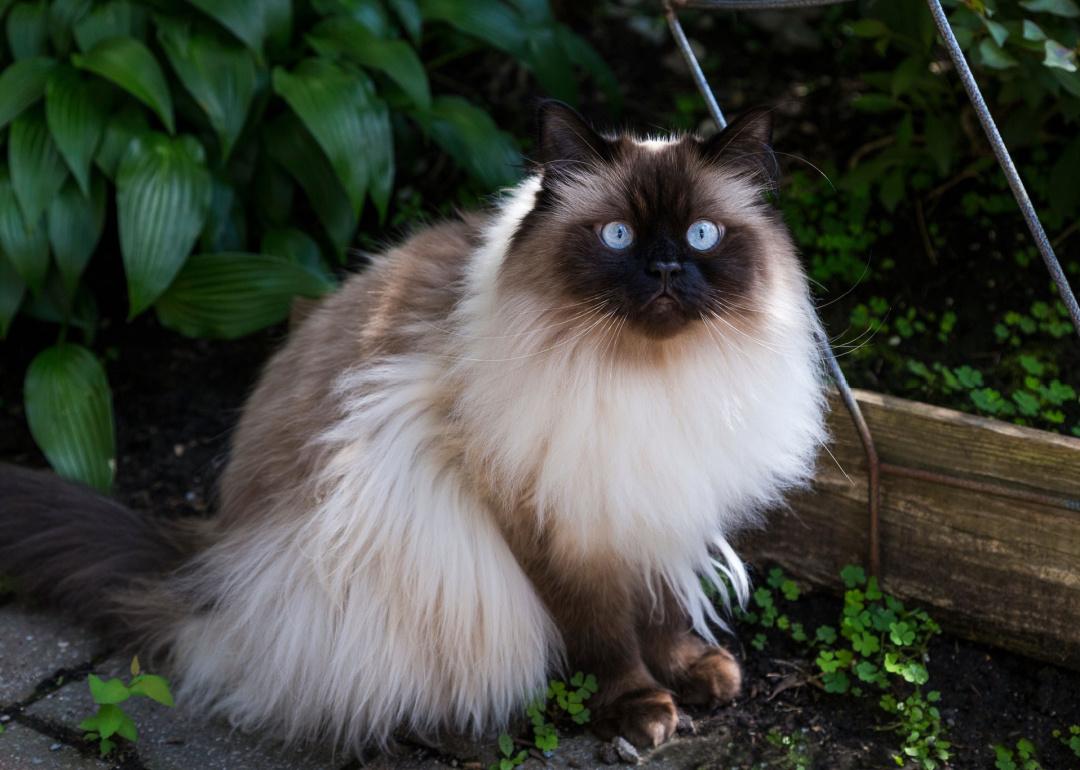
Anne Richard // Shutterstock
#3. Himalayan
Chocolate point himalayan cat with blue eyes in garden
– Popularity: 54%
– Fame: 86%
Also known as “Himmies,” this breed is a cross of Persian and Siamese cats developed in the United States. This mix gives them a great combination of silky hair, which requires daily care, and color on the extremities, face, and ears. The color of their eyes is also valued: the bluer, the better. An easygoing feline, this cat is known to laze around but dart in sudden bursts of activity.
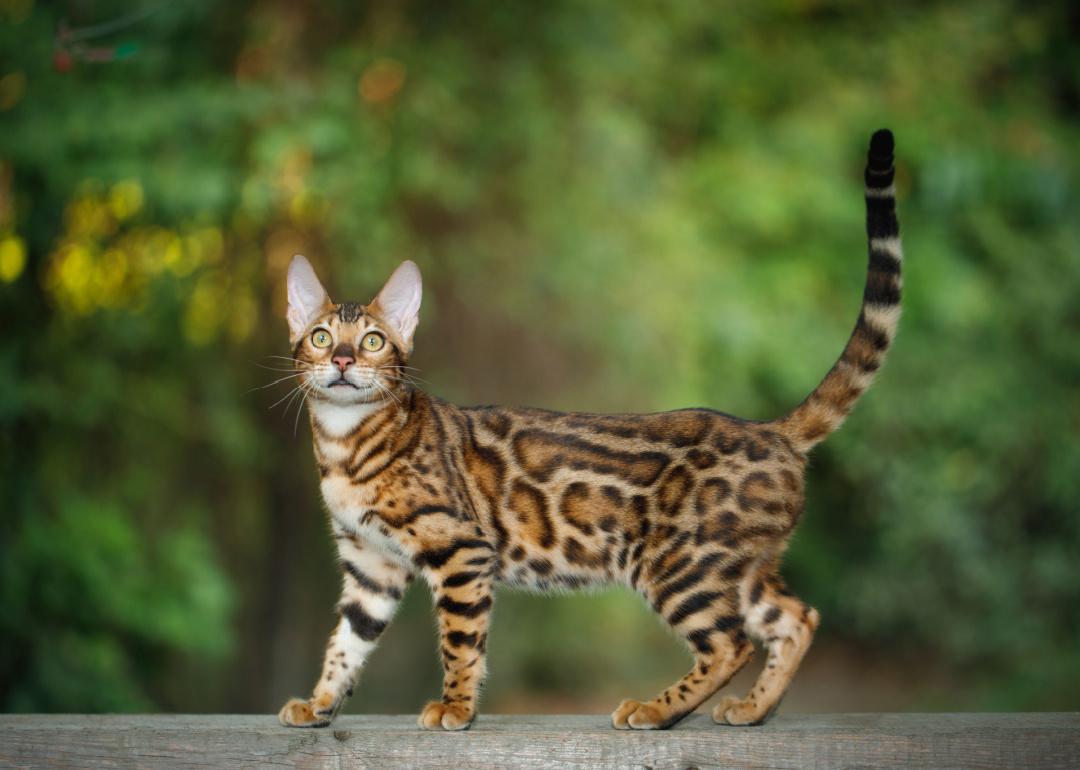
Seregraff // Shutterstock
#2. Bengal
Bengal cat walking outside
– Popularity: 55%
– Fame: 82%
A relatively new breed developed in the ’90s, Bengals are a cross of an Asian leopard cat, domestic cats, and other short-haired breeds. With playful personalities that match their rugged appearance, Bengals love climbing, playing, and exploring. These cats are easily amused and can play for hours—a perfect companion for an active owner.
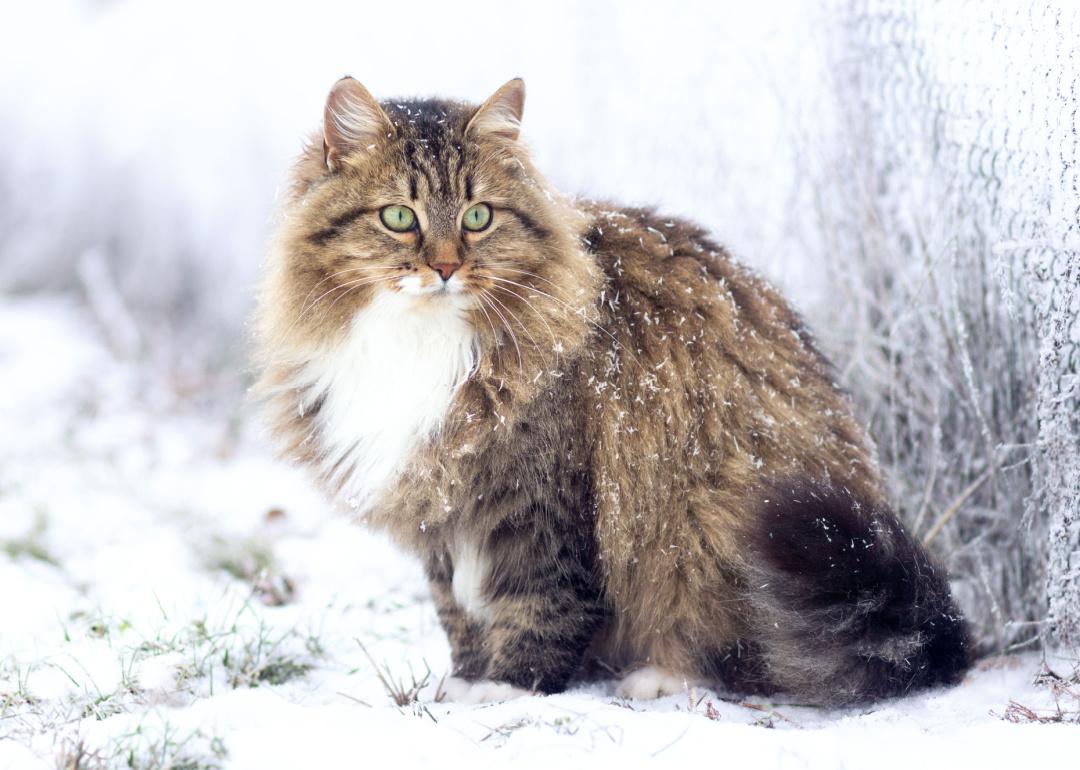
fantom_rd // Shutterstock
#1. Siberian
Siberian cat sitting on snow
– Popularity: 58%
– Fame: 85%
A forest cat adaptive to the cold climes of Russia, this triple-coated cat has existed for thousands of years, but it wasn’t until after the Cold War (around the 1990s) that they were exported to the United States. Because of their long history, they are part of Russian children’s books and fairy tales and are known as Siberian forest cats or Moscow longhairs. Intelligent and playful, these cats love to spend time with their owners, especially if it involves water play. (Some have been known to join their owners in the shower.)
You may also like: Dog breeds gaining popularity